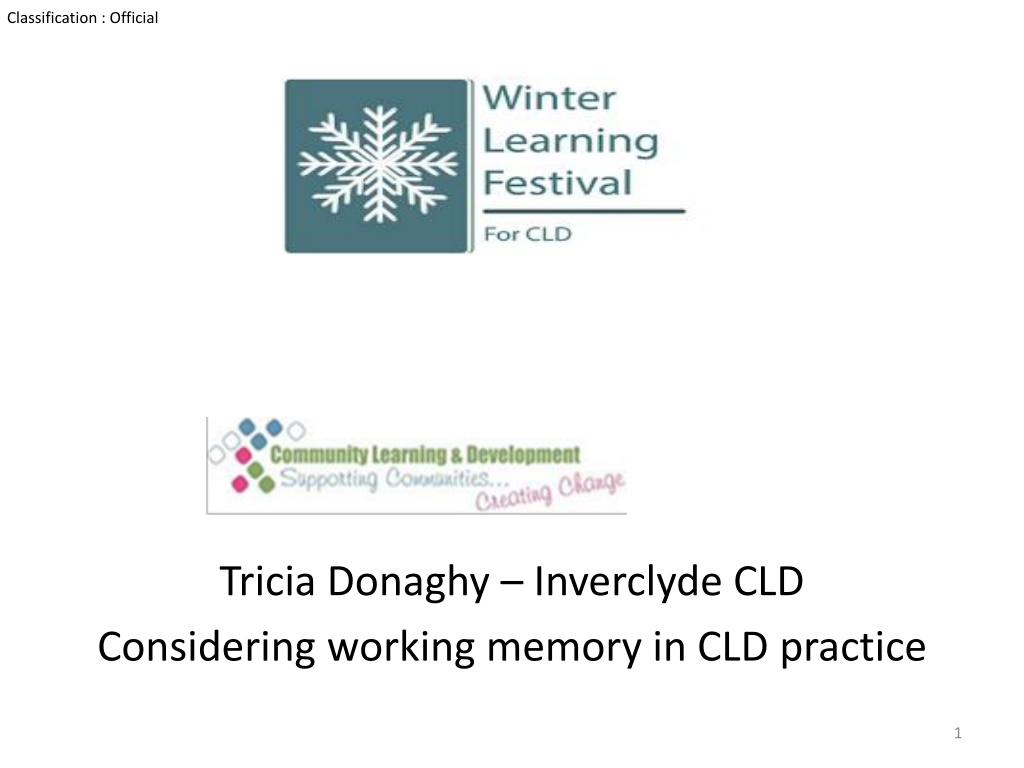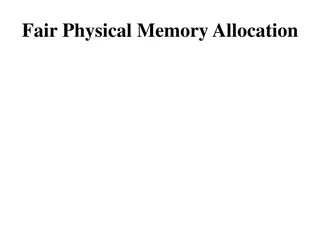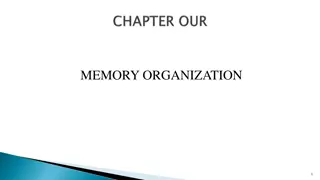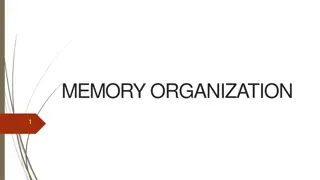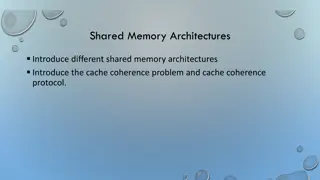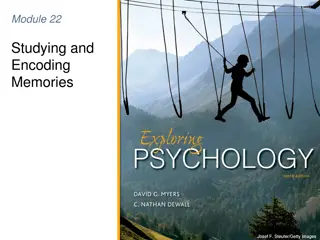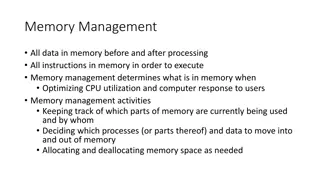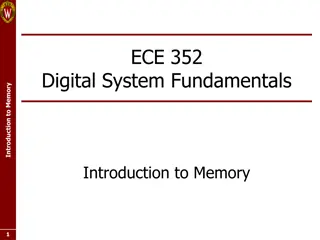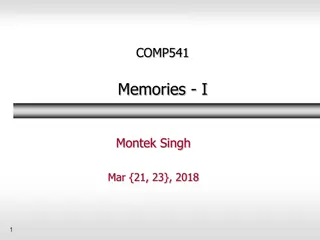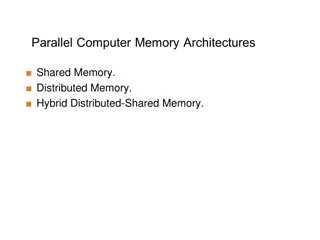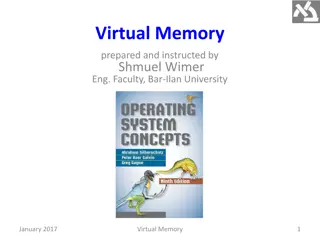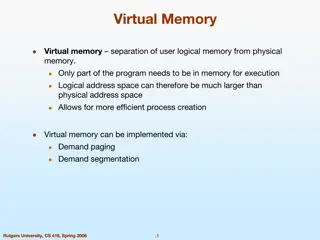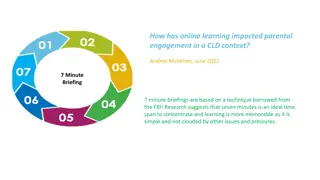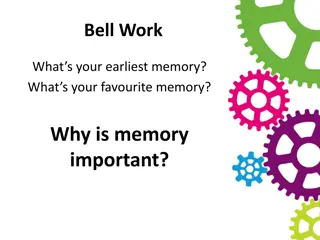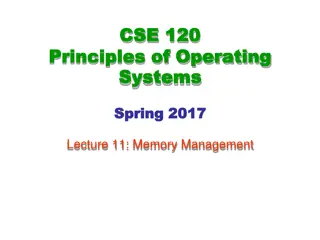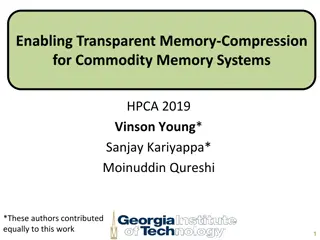Enhancing Working Memory Skills in CLD Practice
The impact of working memory on individuals and strategies to support it in CLD practice. Understand different types of memory, intervention principles, and the role of working memory in everyday life. Discover how working memory aids in attention, organization, and problem solving.
Download Presentation

Please find below an Image/Link to download the presentation.
The content on the website is provided AS IS for your information and personal use only. It may not be sold, licensed, or shared on other websites without obtaining consent from the author.If you encounter any issues during the download, it is possible that the publisher has removed the file from their server.
You are allowed to download the files provided on this website for personal or commercial use, subject to the condition that they are used lawfully. All files are the property of their respective owners.
The content on the website is provided AS IS for your information and personal use only. It may not be sold, licensed, or shared on other websites without obtaining consent from the author.
E N D
Presentation Transcript
Classification : Official Tricia Donaghy Inverclyde CLD Considering working memory in CLD practice 1
Classification : Official Working Memory What is working memory? How does it impact on us as individuals and the individuals that we support? Session Aims: Have an overview of Working Memory (WM) Awareness of the signs of WM overload Awareness of Principles of WM intervention Identify strategies to support WM Application of above awareness and strategies to the work we do Further reading information 2
Classification : Official Activity 1:Memories are made of this . An implicit, long term memory, involved in the performance of different actions and skills e.g Riding a bike, tying your shoelaces. Procedural Semantic Episodic When you intentionally remember something (like a Dr s appt or friend s birthday - an explicit memory Working Autobiographical specific events Episodic memory: These are your long- term memories of Overlap with episodic : Long term memories of specific events which you have personally experienced; but also involves information you have learned or discovered about your life history. 3
Classification : Official What is working memory: (Dr Susan Gathercole Cognitive Psychologist https://www.youtube.com/watch?v=S65D2oazf8M 4
Classification : Official Working memory in action WM one of 11 areas of Executive Function skills Executive Function skills mental functions that help us plan, pay attention, remember information and perform multiple actions at the same time Executive Function the management system of the brain (What is executive function? (understood.org) 5
Classification : Official Working memory in action WM is an essential function in every-day life WM: Processes all stimuli we encounter Delegates it to the different parts of our brain to take action Allows us to block out unnecessary information Keeps us updated on what s happening and focused on what matters WM helps learners with: Focusing attention Avoiding distraction Complex thinking Organisation Problem solving Remembering tasks 6
Classification : Official The Common Factor Individuals with neurodiverse conditions can have constraints on their working memory Based on what we have just discussed, can you think of any other conditions or life experiences which may impact on an individual s working memory 7
Classification : Official The Common Factor Hormonal: Pregnancy ( Baby brain ) Approaches that take note of working memory constraints will help to meet the needs of many learners in your classes, not just those with recognised neuro-divergencies. Dyspraxia Peri- Menopause Dyslexia and Dyscalculia Autistic Spectrum Disorder Menopause WM Old age Illness: Covid Long Covid Brain tumour MS Tourette s Acquired Brain Injuries: Epilepsy Accident Stroke ADHD Stress: COVID Family Work Relationship Financial Illness Bereavement Medications WM WM: Working Memory Addictions: Korsakoff syndrome Dementia/ Alzheimer's 8
Classification : Official Activity :Working Memory Quiz PART 1: How many items of information can you hold in your working memory at any one time? 5 year old 7 year old 10 year old 14 year old By 25 years old - This then declines as you get older - to ! (George Miller Psychologist 1920) 9
Classification : Official Activity :Working Memory Quiz PART 1: How many items of information can you hold in your working memory at any one time? 5 year old 1 thing 7 year old 2 things 10 year old 3 things 14 year old 4 things By 25 years old 5 to 7 things This then declines as you get older - to 3- 4 things! (George Miller Psychologist 1920) 10
Classification : Official Activity : Working Memory Quiz PART 2: As adults, how much (as a percentage %) of our learning do we forget over time? (e.g. A series of 3 letter tri-grams for example, THG, XWV) After 20 mins - 42% After 1 hour 56% After 9 hours 64% After 1 week - 75% Yes, without any repetitions, practical application or consolidation we will only remember 25% of what we ve learned! (Hermann Ebbinghaus psychologist) All learning without reviewing is like filling the bath with the plug out Mike Hughes (Closing the Learning Gap, 2001) 11
Classification : Official BREAK TIME Important to ease Working Memory overload! Of all the environments humans function in, the learning environment is the most notorious for the continual overloading of working memory Milton J Devlin 2011 12
Classification : Official Do you recognise this person? Easily distracted: - fidgeting - getting annoyed or angry becoming very quiet Struggles with: Waiting their turn Problem solving that includes holding info in their mind Completing tasks ,especially multiple step tasks Finds it hard to: Comprehend what he/she reads Integrate new knowledge with prior knowledge Take notes and listen at the same time 13
Classification : Official Effects of a working memory deficit I DON T KNOW HOW TO SPELL IT !!! I CAN T DO THIS!!! It is extremely difficult for a learner to plan a piece of writing: construct sentences that reflect what they would like to say; punctuate work; and spell correctly. Similar stresses may occur with formulating a verbal response to questions, coming up with solutions to problems or when trying to read something important that needs your full understanding and appropriate response in a very short space of time. 14
Classification : Official The principles of WM intervention To avoid working memory failures in order to prevent learning from being delayed or impaired (Gathercole &Alloway 2008) What are the 8 principles? (discuss and feedback) Recognise Monitor Evaluate Reduce Be aware of processing demands Repeat Teach memory aids Teach metacognition (how you learn) 15
Classification : Official How to remember the principles a useful strategy Mneumonic for the principles R E M B A R TT (Mc and Ma) REMemBA , Reduce Teaching (Meta Cognition and Memory Aids) Or REMBaRT Mc n Ma Recognise, Evaluate, Monitor, Be Aware, Reduce, Teach Meta cognition and Memory Aids 16
Classification : Official Working memory strategies RHYTHM Mnemonics R- Rhythm H Has Y Your T- Two H- Hands M Moving Mindmaps 17
Classification : Official Group activity learner scenario Jane has been attending an employability work club for several weeks. Today she has asked for support to complete an application form with an imminent deadline as advised by her DWP Work Coach. For this application, Jane needs to register with an employment website and then upload her CV. Jane needs to update her CV to include her last employment details before she can upload it. The tutor is providing verbal step-by-step instructions to Jane but Jane is struggling to remember each step and is now quite frustrated and is considering not applying for the position. 18
Classification : Official Group activity: What would you do? Please discuss the scenario and answer these questions:- What are the possible WM demands of the learning activity? Which signs of WM overload is the learner exhibiting? Based on the principles of WM interventions - what support would you offer to a learner with limited working memory? 19
Classification : Official Reflective Practice Think of a learning activity within one of your groups and the learners you work with and answer these questions:- What are the WM demands of your learning activity? Which signs of WM overload may your learners be exhibiting? Based on the principles of WM interventions - what support would you offer to a learner with limited working memory? 20
